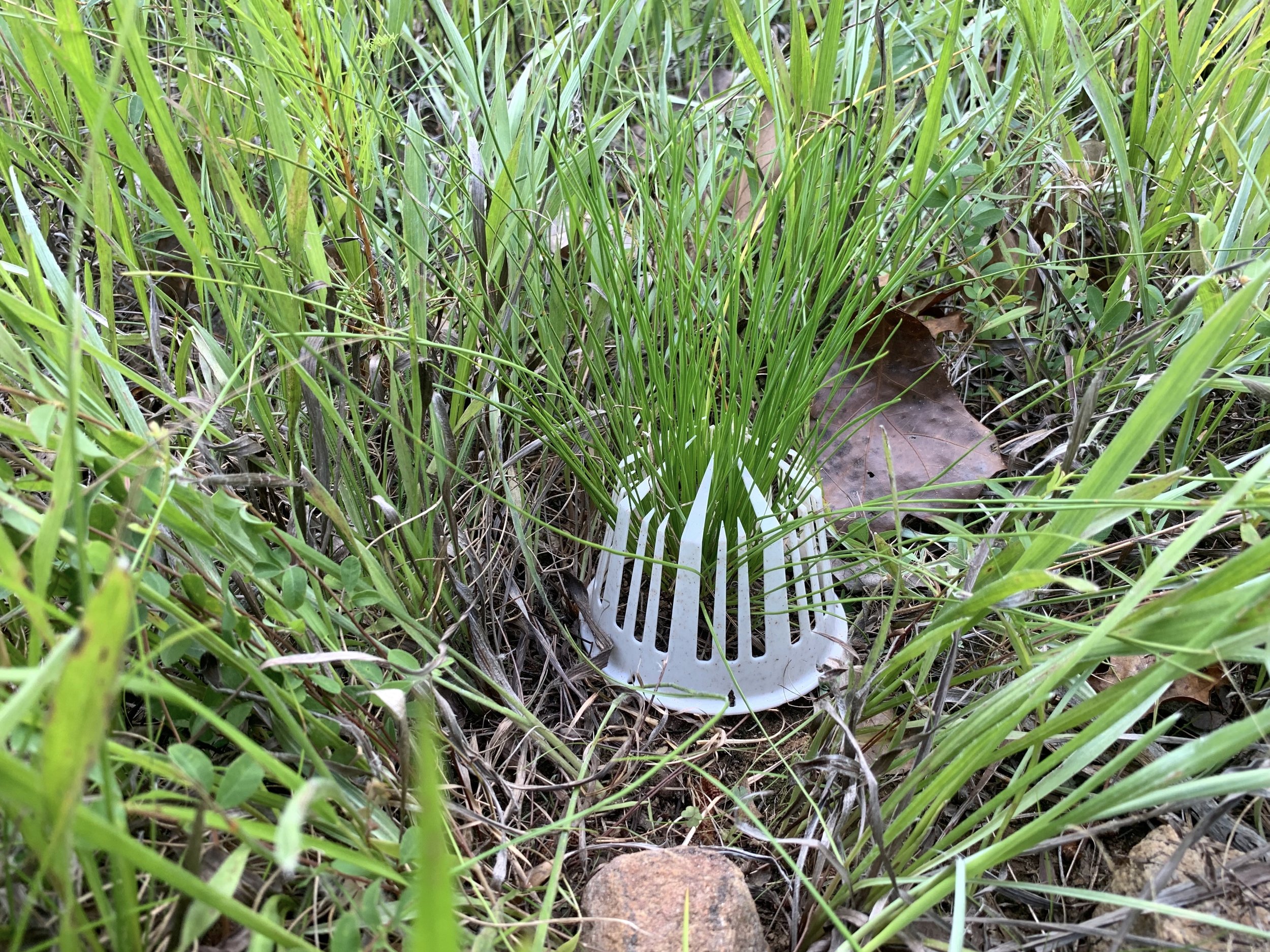
Pursuing Sustainable
Regeneration of Longleaf and Other Keystone Species
Precision Direct Seeding
What if growing longleaf were as easy as sticking a seed in the ground and watching it grow? Nature did it that way for millennia with great success but man’s efforts to regenerate longleaf has often proved frustratingly difficult. Consequently, the riddle of how to get from a seed in a tree at one location to reliably having a seedling growing in another with the least amount of work in between has remained unanswered. Searching for easier ways, I have developed a precision direct seeding method and associated device called a Seed Crown™ that has achieved seed-to-surviving-seedling rates at the one-year mark exceeding 60% for longleaf seeds planted straight into the forest ground, with average rates for thousands of seeds across dozens of test plots greater than 30%. The method, which combines precision direct seeding with a measure of predator protection, may offer new hope for direct seeding, especially in applications where conservation objectives are more important than speed to merchantable forest products or other settings where the costs or collateral consequences of planting nursery stock the standard way seem sub-optimal.
This website is meant to be an invitation to potential collaborators of all types — researchers, nonprofits, for profits, agencies, landowners or any other types of longleaf enthusiasts — to join or even take the lead in the journey by testing and improving upon the methods and techniques described below.
Longleaf Direct Seeding – A Path Once Traveled
For much of the Twentieth Century, longleaf luminaries like James P. Barnett (pictured to the left - USFS SRS-187, Cover Photo J.P. Barnett) and many other forest professionals made substantial efforts to develop direct seeding techniques for regenerating the iconic tree, including the use of aircraft and various land-based operations. Heavy predation losses from birds, rodents, and insects, however, overtaxed seed sources and generally made direct seeding unreliable. As an interesting aside, Canadian foresters at about the same time tried using what they called “biodegradable” seed shelters for regenerating conifer species in the boreal forests but vegetative fouling, the expense of the plastics chosen, complexity of the design, and labor requirements combined to result in the efforts being abandoned. As recently as 2006, graduate researchers in Montana showed that combining seed planting techniques that mimic bird caches with large cage shelters produced germination and survival rates competitive with nursery stock. Although these and a few other techniques found a measure of success, direct seeding has all but vanished as a reforestation tool and, as a result, longleaf and other keystone tree species are regenerated today almost exclusively with planted seedlings started either in containers or bareroot beds.
The site preparation expense and various logistical requirements of these standard methods make reforestation impractical for many sites, especially those involving small acreage, difficult to access locations, or those motivated primarily by conservation objectives.
As we continue to learn more about the importance of keystone tree species to many habitat types, and as interest in conservation objectives grows among governments and nonprofit organizations, situations where planting nursery stock may be impractical represent a substantial missed regeneration opportunity.

